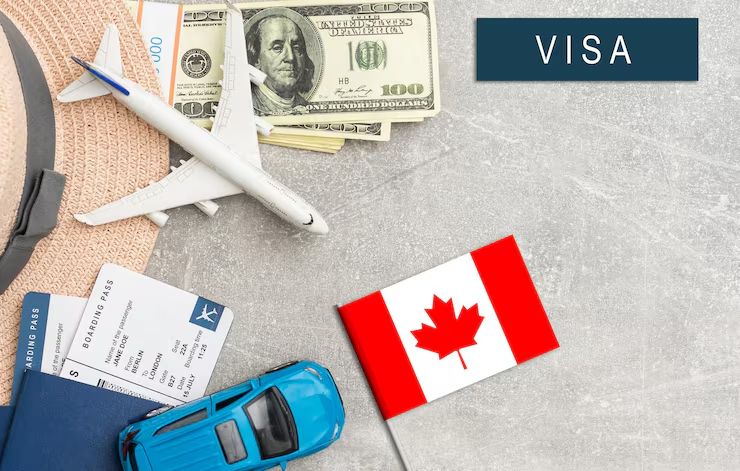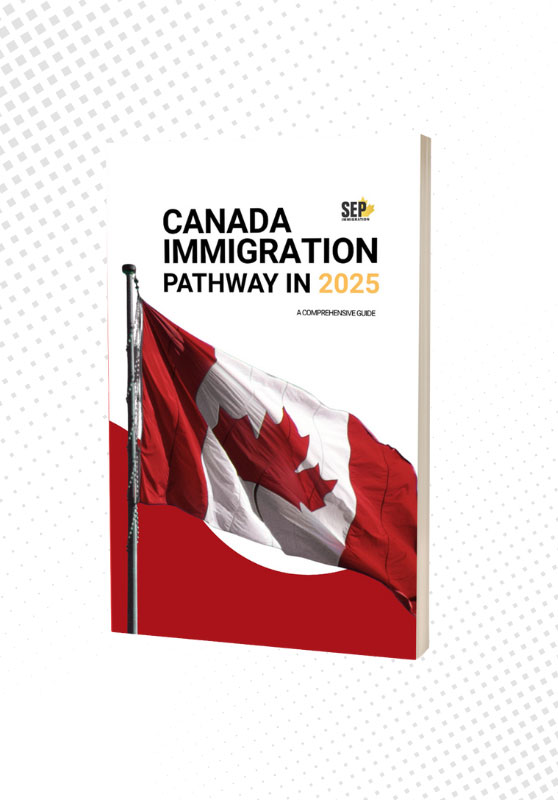
Immigration, Refugees, and Citizenship Canada (IRCC) is making the process for Temporary Resident Visa (TRV) applications faster by using advanced data analytics. This system helps officers handle all applications made from outside Canada, but IRCC still makes the final decision. The system identifies simple applications, like those from people whose TRV applications have been approved in the past 10 years. It also sorts applications based on how complex they are. The system can decide if an applicant is eligible, but it cannot refuse applications.
Table of Contents
ToggleAdvanced Data Analytics to Help IRCC Officers Process TRV Applications
To make the Temporary Resident Visa (TRV) application process faster, IRCC has started using an advanced data analytics system. This technology helps officers by quickly sorting and prioritizing applications. By sorting applications based on their history and complexity, the system allows officers to focus more on the more difficult cases. The goal is to reduce waiting times and improve efficiency without affecting the quality of decision-making. Even though the data analytics can help decide eligibility, a human officer always makes the final decision to make sure it is fair.
The new analytics system especially helps people who have had a TRV in the past 10 years. By using this technology, IRCC can make sure that straightforward cases are approved more quickly, so people can visit family, attend business meetings, or explore Canada without unnecessary delays.
Countries with Conditional Eligibility
Some countries are marked by IRCC as having conditional eligibility for TRV applications. This means that people from these countries may have an easier process if they meet certain requirements, like having previous visas to Canada or other countries like the United States or the United Kingdom.
Applicants from these countries may need fewer documents or get faster processing times if they meet conditions like a good travel history and following visa rules in the past. It is important for applicants to check if their country is in this category and understand any benefits or requirements that may apply to their TRV application.

What is a Temporary Resident Visa?
A Temporary Resident Visa (TRV) is an official document given by IRCC that lets foreign nationals enter Canada for a short time. It is usually given for purposes like tourism, visiting family or friends, attending business meetings, or other short stays. A TRV is attached to the traveler’s passport and shows that they meet the requirements to enter Canada.
It is important to remember that having a TRV does not guarantee you can enter Canada. The final decision is made by the border services officer at the port of entry, who will decide if you still meet the requirements to enter when you arrive.
Does Everyone Need a TRV to Visit Canada?
Not everyone needs a Temporary Resident Visa to visit Canada. Citizens from visa-exempt countries can enter Canada without a TRV but might need an Electronic Travel Authorization (eTA) before flying. Countries like the United States, Australia, and many European Union countries are visa-exempt.
However, people from non-visa-exempt countries will need a TRV to enter Canada, no matter why they are visiting. It is best to check the IRCC website to see if your country needs a TRV or if you are eligible for an eTA instead.
What Can I Do if My TRV Application is Refused?
If your TRV application is refused, you will get a letter from IRCC explaining why. Common reasons include not having enough money, not having strong ties to your home country, or concerns that you might not leave Canada when your stay ends.
If your TRV application is refused, you have a few options:
- Reapply with More Documentation: You can fix the reasons for refusal by sending in new or stronger proof to show you are eligible.
- Request a Reconsideration: In some cases, if you think an error was made, you can ask for reconsideration, though this is not common.
- Appeal the Decision: Depending on your situation, you might be able to appeal, but this is usually for more complex cases.
It is important to carefully review the reasons for refusal and consult an immigration expert if needed before reapplying.
How Can I Help a Friend or Family Member Get a TRV to Visit Canada?
If you have a friend or family member who wants to visit Canada, you can help by providing an invitation letter. This letter should include information about your relationship with the applicant, the purpose and length of their visit, and details about your own status in Canada.
You can also provide supporting documents, like proof that you can support them financially during their stay (if needed) and proof of your residence in Canada. The invitation letter helps IRCC understand the purpose of the visit and the applicant’s ties to Canada, which can help with their application. Much similar to the sponsorship programs.
FAQs
What Documents Are Needed for the Application?
The documents needed for a TRV application depend on the applicant’s specific situation but generally include:
- Passport: A valid passport with at least one blank page.
- Photographs: Passport-sized photos that meet IRCC requirements.
- Proof of Funds: Evidence that you have enough money to cover your stay in Canada, like bank statements or pay stubs.
- Purpose of Travel: Documents that explain why you are visiting, like an invitation letter, hotel reservations, or a travel itinerary.
- Ties to Home Country: Documents that prove you plan to return home after your visit, like employment letters, property ownership, or family obligations.
Other documents may be needed based on your individual circumstances or specific IRCC requests.
I Am a US Resident with a Green Card. Do I Need a TRV?
No, if you are a U.S. resident with a valid Green Card, you do not need a Temporary Resident Visa to visit Canada. Instead, you will need to get an Electronic Travel Authorization (eTA) before flying to Canada. If you are entering Canada by land or sea, you do not need an eTA, and you can use your Green Card and passport to enter.
Can I Fill Out One Application for My Family If We Are Traveling Together?
Yes, if you and your family are traveling to Canada together, you can send all applications together in one package. Each family member, including children, needs their own completed application form, but they can all be submitted together, which can make the process easier. Make sure to include all the required documents for each person to avoid delays or refusals.
How Long Can I Stay in Canada on My TRV?
A Temporary Resident Visa usually allows you to stay in Canada for up to six months. When you arrive, the border services officer will decide how long you can stay, and they might stamp your passport or give you a document with your allowed stay period.
If no specific date is given, you can stay for six months from the date you enter. It is important to follow the terms of your visa to avoid problems with future travel or applications.
How Can I Extend My Stay?
If you want to extend your stay in Canada, you need to apply for a visitor record before your current status ends. This application should be sent at least 30 days before your current authorized stay ends.
A visitor record is not a visa but a document that lets you stay longer in Canada as a visitor. If approved, it will show the new end date of your stay. Keep in mind that extending your stay does not guarantee you can re-enter Canada if you leave and want to come back.
Can I Study in Canada on My TRV?
A Temporary Resident Visa does not let you study in Canada for programs longer than six months. If you plan to take a short course or program lasting six months or less, you can do this on a TRV. For any program longer than six months, you need to apply for a study permit.
A study permit lets you take long-term education in Canada, and it may have conditions, like whether you can work while studying.
Can I Work in Canada on My TRV?
No, a Temporary Resident Visa does not let you work in Canada. If you want to work, you need to get a work permit. There are different types of work permits, like employer-specific permits and open work permits, depending on your situation and eligibility.
If you want to work temporarily in Canada, you need to apply for a work permit, which usually requires a job offer from a Canadian employer and may need a Labour Market Impact Assessment (LMIA).
Do I Need a TRV to Come to Canada on Business?
If you are from a country that is not visa-exempt, you will need a Temporary Resident Visa to visit Canada for business. A business visitor is someone who comes to Canada for international business activities, like attending conferences, meetings, or training sessions, without entering the Canadian labor market.
In addition to a TRV, you might need to provide documents like an invitation letter from the Canadian business, proof of your job, and proof of why you are visiting. Business visitors are allowed to stay for up to six months, but they cannot work in jobs that would need a work permit.
2025 Update of TRV Process
In 2025, Immigration, Refugees and Citizenship Canada (IRCC) made several updates to how Temporary Resident Visa (TRV) applications are handled. Officers still make all final decisions, but a digital system now sorts applications before review. It looks for patterns like past travel to visa-compliant countries, consistent employment, and complete documents. This allows simpler cases to move faster.
Automation is being tested for routine checks, such as spotting duplicate files or missing documents. These steps are reviewed by officers but no longer handled manually in every case.
To reduce regional backlogs, IRCC has begun routing some applications to centralized processing hubs. This helps balance workloads during busy periods.
The applicant portal has also improved. It now shows application stages more clearly and flags any follow-up needed.
IRCC now releases processing data more frequently. Applicants can see average wait times, approval rates, and reasons for common delays. This helps set clearer expectations.
Why choose us?
We have been helping many applicants to become permanent residents for years and we have a high success rate. Our clients from almost 20 different countries have experienced this with us and you can be the next successful one. We know how to prepare documents and how to make your immigration process smooth and easy for you. Contact us HERE to start the process today!
If you are not a Canadian Permanent Resident yet and you are not sure what the best way for you to immigrate to Canada is, please fill out our assessment form HERE and we will get back to you with your possible options.





